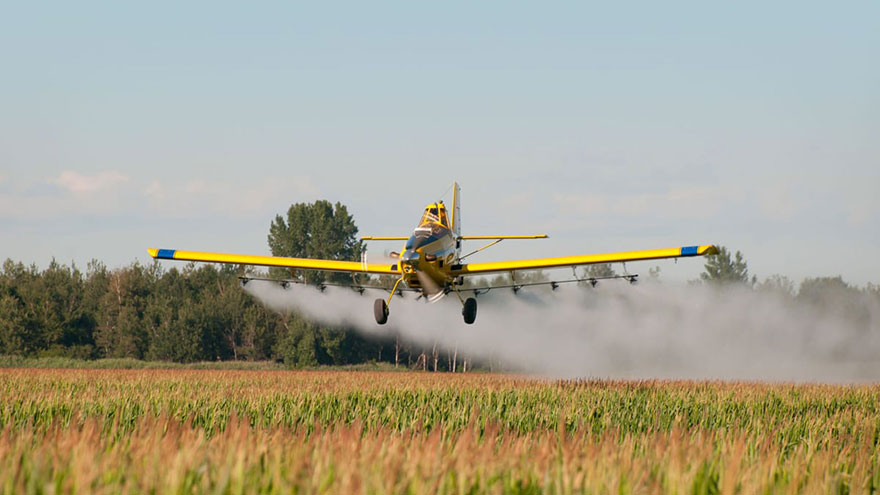Crop Dusting Dangers
Crop dusting can be dangerous work. The crop duster flies above fields and splashes synthetics that help shield crops from being assaulted by parasites, boll weevils and weeds.
Crop dusting is the aerial application of dispersing chemicals. Spreading fertilizer from above is also referred to as aerial topdressing.

Aircraft
The airplanes that are currently used for crop dusting are safe and sophisticated. However, in the past the planes were not constructed for the specific job of crop dusting. They were either too light or had weak frames and poor visibility, which sometimes resulted in fatal accidents.
A crop dusting plane must be purpose-built, meaning that it is constructed for its precise job. These agriculture planes sometimes do double duty as water bombers and are used to drop water into wildfires.
The right aircraft must be used because the plane moves fast and low. The pilot must have excellent visibility to avoid collisions. Anytime a pilot is flying this fast and this low it is dangerous, and that is why a pilot needs to be experienced.
Collisions
Dangers for the pilot include encountering obstacles. The plane flies low, so the pilot must be very careful not to run into electrical wires and fences. The pilot has to multi-task.
He is flying an air craft close to the ground at high speeds while paying close attention to his instruments, keeping track of the chemicals that he is spraying and trying not to run into anything in the process. Many crop dusting pilots have crashed in an emergency or forced landing in a country field.
Chemical Dangers Still Exist
Chemicals are handled with great care in this day and age and are often sprayed in a liquid form rather than in a cloud of dust, which is safer for everyone involved. Anytime a person is exposed to toxic chemicals on a regular basis this is a risk to their health.
Ounces of chemicals, rather than pounds, are now used to try to cut down on chemical exposure. Crop duster pilots are taught to fly low, almost to the point where the wheels of the plane touch the ground, to reduce chemical drift, which is the straying of pesticides and fertilizers to areas where they are not supposed to go.
Controlling the spray is the objective, but it is not always possible and there is always the risk that someone is going to be exposed to the toxic chemicals.
Observers
If you are in the vicinity when crop dusting is taking place, you must stay upwind from the spray. Do not stand or park close to the area that is being sprayed.
The craft flies low and when things go wrong they go wrong fast, according to Brad Price, an agricultural pilot.
Dangers that Crop Dusters No Longer Face
When crop dusting first began, flagmen stood in the field holding white flags so the pilot could see where he had sprayed. The flagmen wore face masks to protect themselves from the chemical that was being sprayed.
If the flagmen did not stay out of the way he was in danger of colliding with the low-flying plane. Flagmen are no longer used. The contemporary crop dusting plans have flagging systems that keep them from over-spraying, which destroys the crops.
In the mid-20th century, the use of stronger chemicals began. Initially, those involved with the business did not realize how toxic they were and died because of exposure to the chemical.

